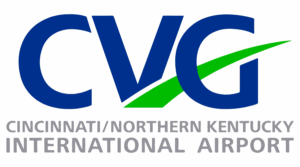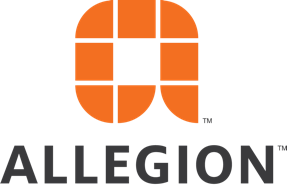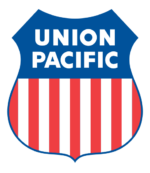Let us help you make sense of PSM / RMP!
My friend Brian Chapin will be offering an open-enrollment PSM/RMP class in Burleson, Texas, July 8th to 11th, 2025. Brian is an absolute pro in NH3 Refrigeration Process Safety. Anyone who attends will also get a FREE membership to SAFTENG. You can get more information on the class with this link.
CLICK HERE to Renew your Membership
CLICK HERE for a NEW Membership
CLICK HERE to see eligibility requirements for FREE Membership
If you have any questions, please contact m
SAFTENG has:
- Over 18,000 categorized unsafe acts/conditions and accident/injury photos
- Over 1,500 ppt's & doc's in the SAFTENG Library
- Over 4,000 Technical Articles on Process Safety, Emergency Response & OSH topics
- Over 450 videos (those not allowed on YouTube Channel)
Many THANKS to my NEW Members and those who CONTINUE to support SAFTENG:














October 19, 2024
Another pressurized piping fatality…
On March 27, 2024 @ 9:30 a.m. Employee #1, 21, had been installing hydronic piping in a boiler room.
Employee #1 began loosening a clamp holding a pressure testing cap that was under 100 PSI of pressure.
The testing cap became a projectile, striking Employee #1 in the face. Employee #1 was killed.
Read More
October 19, 2024
In an ordinary setting (i.e., one without flammable gases or vapors), its use is typically not considered Hot Work by many. We always managed the hazards/risks when their use was not part of a formal hazard assessment for production/shipping. But when a heat gun was used as part of maintenance activities in an area where production or shipping is not using them, this was indeed HW. ...
Read More
October 19, 2024
Back in 2017, we discussed the hazards associated with dock levelers and working under the dock plate. These are indeed permit-required confined spaces, albeit ones that can be RECLASSIFIED using basic energy control methods (i.e., Lockout). In that 2017 article, I shared a video from a dock leveler manufacturer on how to isolate the dock plate BEFORE entering the area under it. On March...
Read More
October 19, 2024
On March 18, 2024, @ 11:00 a.m., it appears that Employee #1, 32, was standing under the raised forks of a forklift truck.
The forks/backrest assembly appeared to have fallen onto Employee #1.
Employee #1 died due to decapitation.
Read More
October 19, 2024
On March 8, 2024, @ 4:50 p.m., an employee, 32, entered a unitizer (pallet stacker) machine when it engaged, crushing him. The employee was killed. CLICK HERE to see the video of the machine involved Company removed guards, failed to ensure power shutoff with workers nearby Both management and workers told inspectors that the permanent machine guards that attached directly to this specific equipment...
Read More
October 19, 2024
To be clear, I can’t entirely agree with Alaska OSHRC’s decision to dismiss the OSHA citation. But I am also tired of the blanketing workplaces with hi-vis gear that is NO LONGER “highly visible” or “reflective.” These vests and other HI-VIS gear are used WAY beyond their intended life cycle, making safety a highly visible mockery. If we feel this...
Read More
October 19, 2024
According to reports, the sewage explosion occurred during a pressure test of the septic tank pipeline conducted by qualified engineers as part of the pipeline installation process. This incident should be all we need to demonstrate why we test before the pressure retaining equipment is put into service and NEVER use hazardous materials to perform the pressure tests. https://www.freepressjournal.i...
Read More
October 19, 2024
Safety should be an unwritten rule, a social norm, that workers follow regardless of the situation. It should become a value that is never questioned—never compromised. It is human nature to shift priorities, or behavioral hierarchies, according to situational demands or contingencies. But values remain constant. The early morning anecdote illustrates that the activity of “getting dressed” is a value...
Read More
October 19, 2024
I have this debate several times a year and always go to the “note” in 1910.146 related to the definition of “atmospheric hazards”. And that is never enough to convince people that 1910.146 deals ONLY with ACUTE responses to atmospheric hazards – NOT chronic responses. Now let’s be clear that chronic hazard MUST be addressed/managed, but it falls outside...
Read More
October 19, 2024
Respondent was the “owner or operator” of the Facility. The Facility’s refrigeration system used approximately 5,913 pounds of anhydrous ammonia. Accordingly, at the time of the violations alleged herein, Respondent operated a stationary source that handled and stored anhydrous ammonia, listed at 40 C.F.R. § 68.130, and thus was subject to the General Duty Clause found in section 112(r)(1) of the CAA....
Read More
October 19, 2024
Respondent is the owner and operator of a facility where EPA inspected from May 17 to May 19, 2022, to determine Respondent’s compliance with Section 112(r) of the CAA and 40 C.F.R. Part 68 (“the Inspection”). The Respondent’s facility is a metal alkyl manufacturing facility. The facility produces a variety of highly reactive metal alkyls including aluminum, magnesium,...
Read More
October 19, 2024
Catastrophe requires multiple failures – single-point failures are not enough The array of defenses works. System operations are generally successful. Overt catastrophic failure occurs when small, apparently innocuous failures join to create opportunity for a systemic accident. Each of these small failures is necessary to cause catastrophe but only the combination is sufficient to permit failure. Put...
Read More















